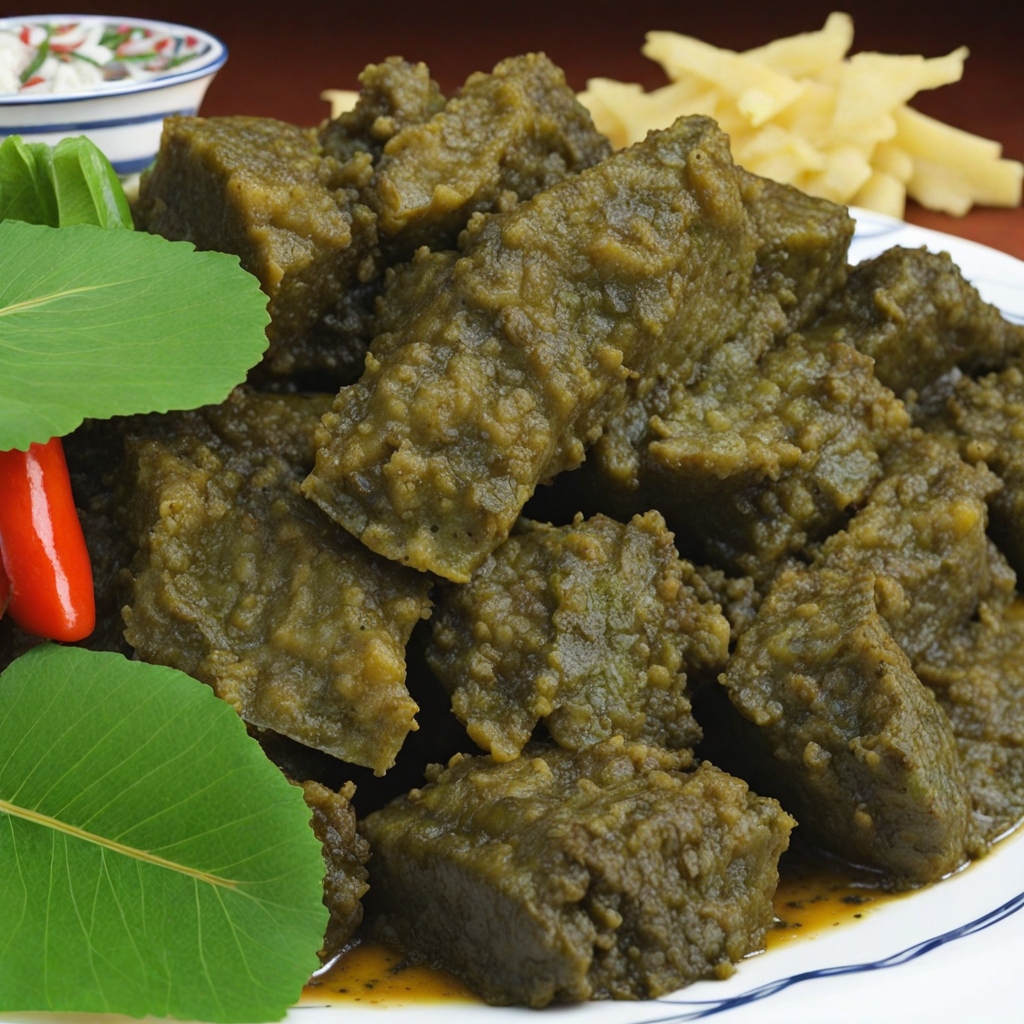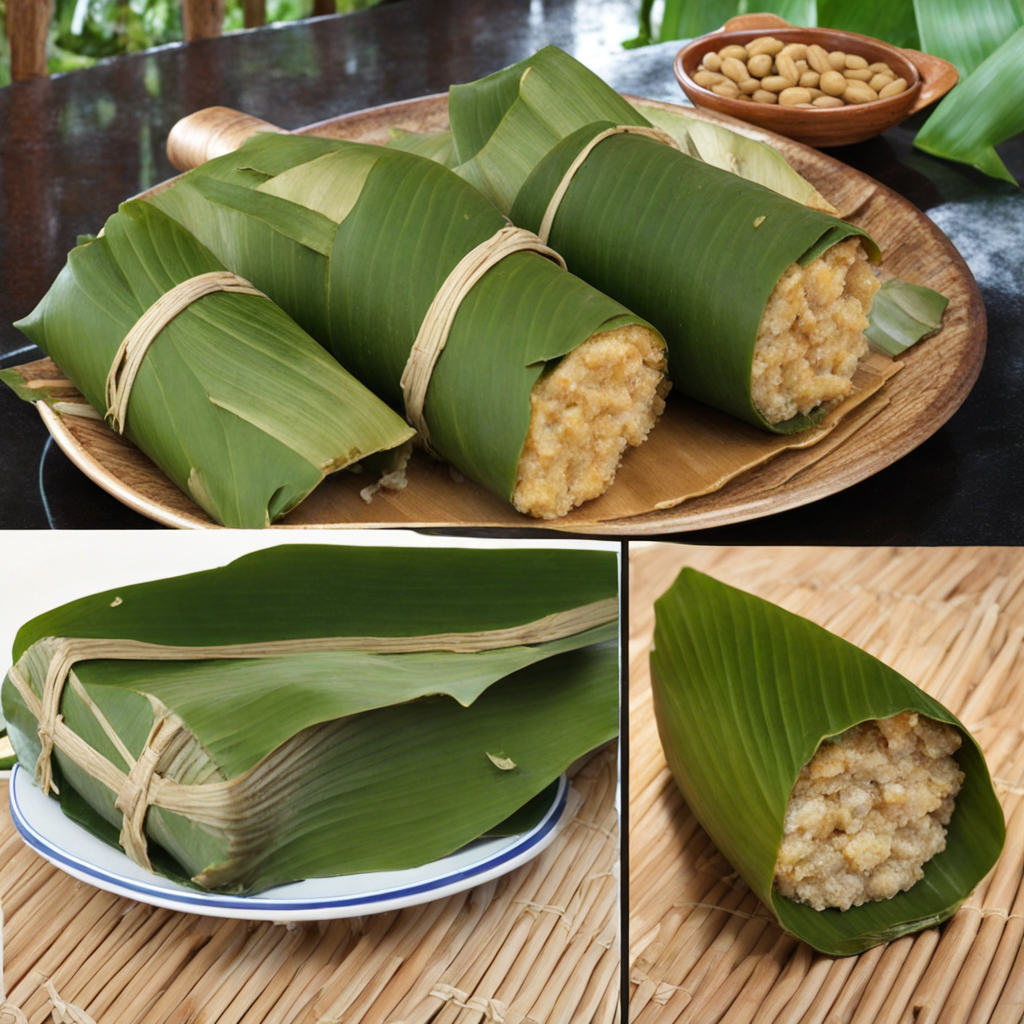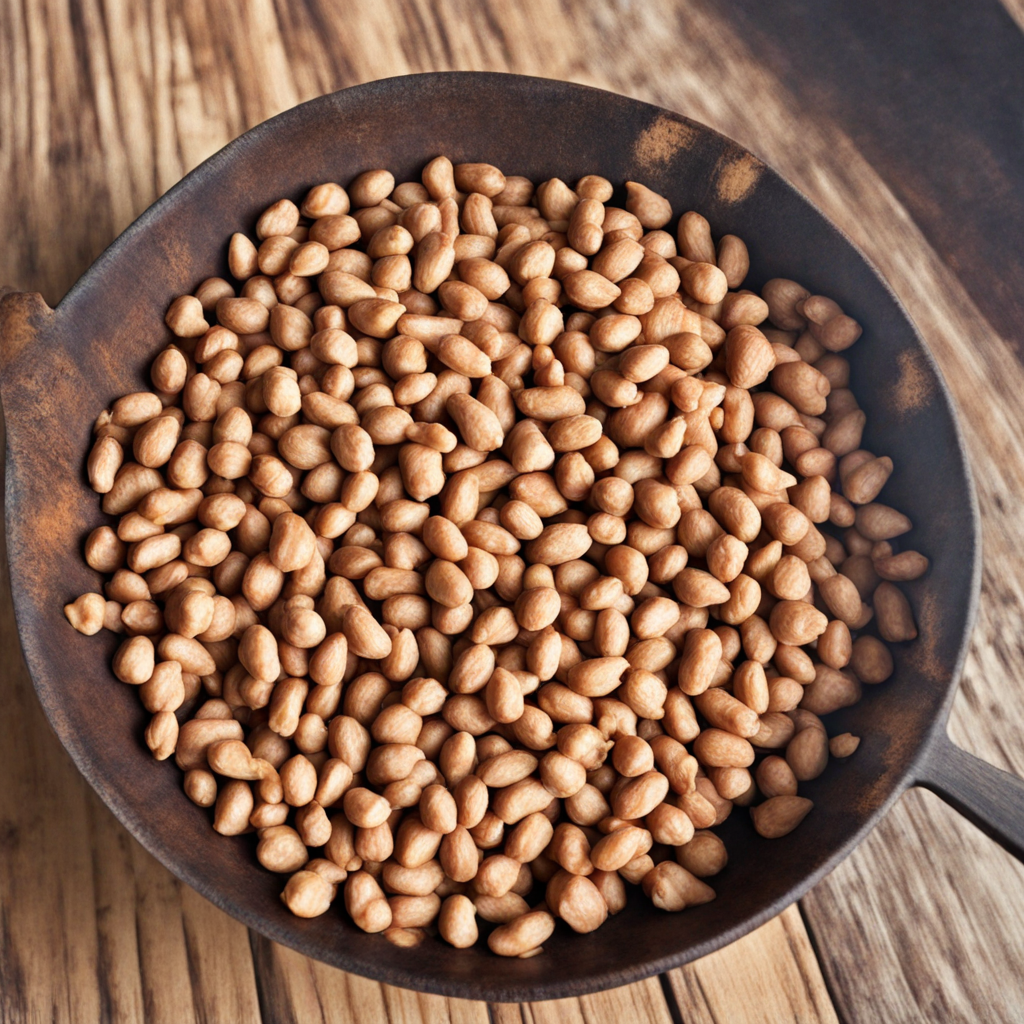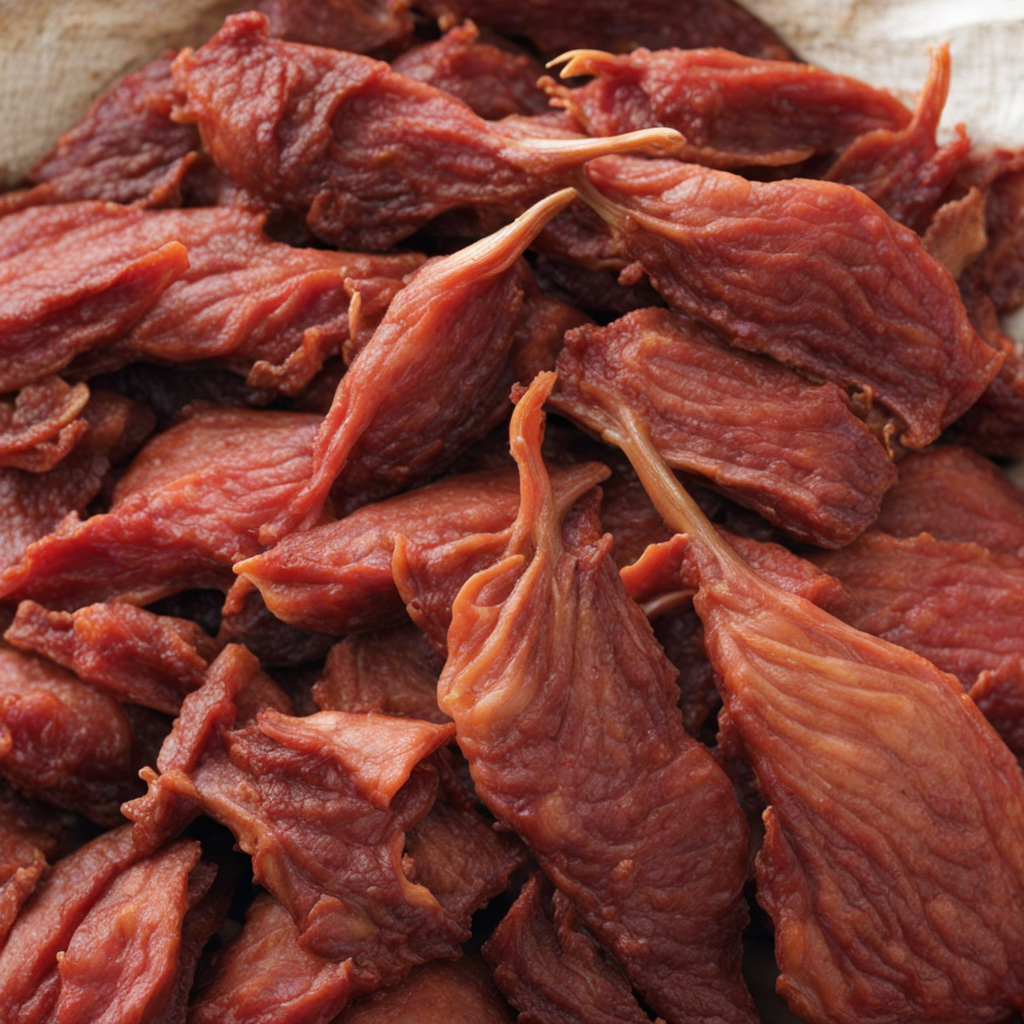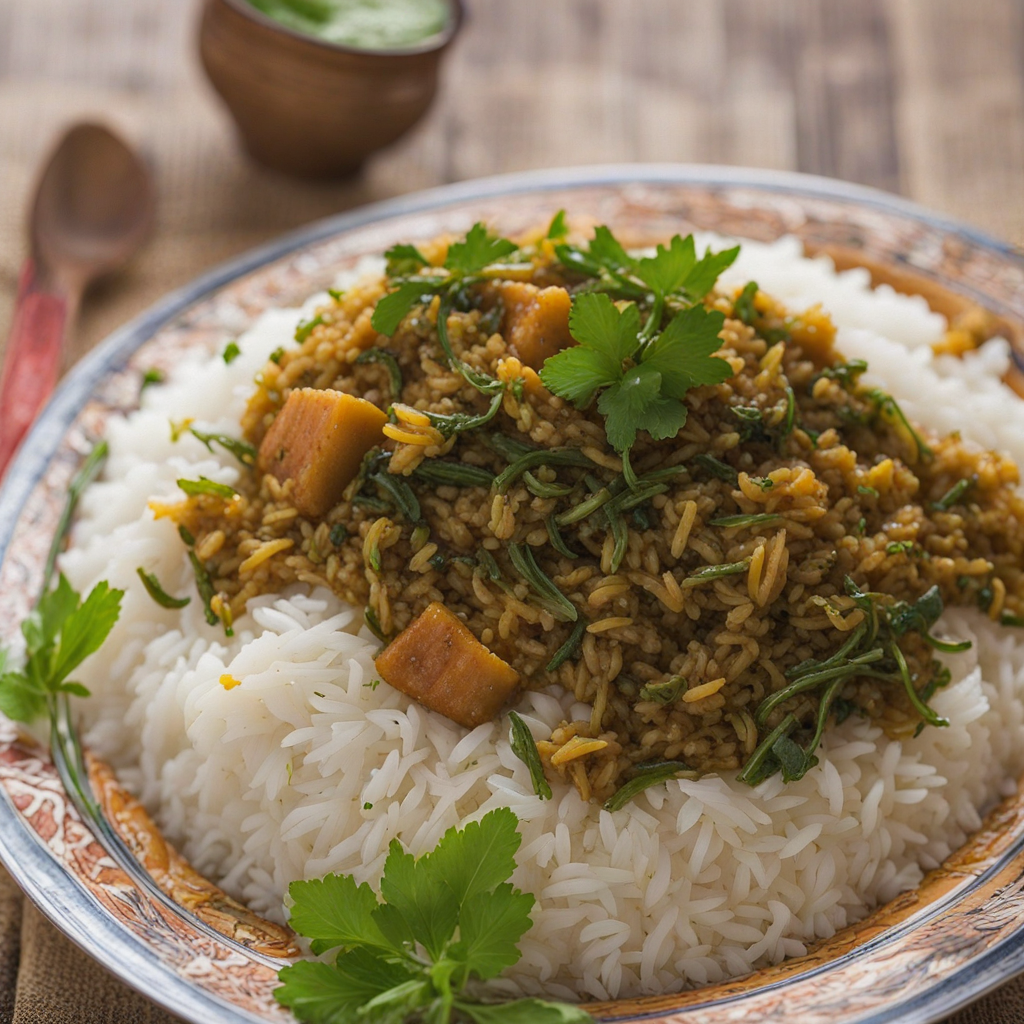Ravitoto
Ravitoto is a traditional Malagasy dish that beautifully showcases the unique flavors of Madagascar. At its core, this dish consists of finely ground cassava leaves, which are known as "ravitoto." The leaves are cooked down to a rich, earthy paste that carries a slightly bitter note, balanced by the natural sweetness of the cassava. This vibrant green base is often enriched with garlic and sometimes seasoned with a hint of chili, providing a depth of flavor that is both comforting and intriguing. The texture is creamy and hearty, making it a satisfying choice for a meal. Typically, Ravitoto is paired with a protein, most commonly pork, which adds a savory element to the dish. The pork is usually slow-cooked until tender, allowing the flavors to meld beautifully with the ravitoto. The combination of the succulent meat and the aromatic cassava leaves creates a symphony of taste that is distinctly Malagasy. When served with a side of rice, it transforms into a complete meal that is both filling and nourishing. The harmony of flavors in Ravitoto reflects the culinary heritage of Madagascar, making it a must-try for adventurous eaters. For those looking to explore new tastes, Ravitoto offers a unique experience that is both exotic and approachable. Each bite transports you to the lush landscapes of Madagascar, where the rich agricultural history is mirrored in the simple yet profound ingredients of the dish. Whether enjoyed at a local eatery or prepared at home, Ravitoto invites food lovers to savor the essence of Madagascar's culinary traditions, celebrating the use of local produce and time-honored cooking methods.
How It Became This Dish
Ravitoto: The Heart of Malagasy Cuisine Origins and Ingredients Ravitoto, a dish deeply rooted in Madagascar's culinary landscape, is a traditional meal consisting primarily of crushed cassava leaves (known as "ravitoto") and often served with meat, typically pork. The dish showcases the unique agricultural practices of Madagascar, where cassava thrives in various climates and is a staple food for many communities. The origins of ravitoto can be traced back to the island’s diverse ethnic groups. Madagascar, which separated from the African mainland approximately 165 million years ago, has developed a rich cultural tapestry influenced by African, Arab, Indian, and later European settlers. The indigenous Malagasy people cultivated cassava, a resilient crop that provided sustenance in the face of unpredictable weather patterns. Cassava, both nutritious and versatile, became a foundation for many dishes, among which ravitoto stands out due to its distinctive preparation and flavor profile. Cultural Significance Ravitoto is more than just a dish; it embodies the spirit and traditions of Madagascar. Its preparation and consumption reflect communal values and the importance of family. Typically made for special occasions, such as weddings or community gatherings, ravitoto brings people together. The act of cooking this dish often involves the whole family, with members contributing to the preparation process, from harvesting the cassava leaves to cooking the meat and assembling the final meal. In Madagascar, food is often interwoven with cultural practices and rituals. Ravitoto is traditionally served with rice, the staple food of the Malagasy diet, and it is customary to eat with one’s hands, symbolizing a connection to the land and the food itself. The dish is often accompanied by a spicy sauce made from local peppers and spices, adding a vibrant kick that enhances the meal. Ravitoto also holds a place in the nation’s folklore and oral traditions, where it is celebrated in songs and stories that recount the history of the Malagasy people. It serves as a symbol of resilience, representing the ability to sustain oneself with locally available resources, a practice that has been necessary for generations. Development Over Time Throughout its history, ravitoto has evolved in various ways, influenced by Madagascar's colonial past and global culinary trends. During the French colonization in the late 19th and early 20th centuries, new ingredients and cooking techniques were introduced, leading to a fusion of flavors and styles. This period saw the incorporation of additional spices and the adaptation of cooking methods, which enriched the traditional preparation of ravitoto. Despite these changes, the fundamental components of ravitoto have remained consistent. The dish is still primarily made with cassava leaves, which are first boiled and then pounded into a paste, a technique that dates back centuries. The grounding of the leaves not only enhances their flavor but also helps to release their nutrients, making the dish both hearty and nourishing. In contemporary Madagascar, ravitoto has gained recognition beyond its traditional roots. As tourism has increased, so too has interest in Malagasy cuisine. Local chefs and home cooks alike have begun to experiment with ravitoto, incorporating modern culinary techniques while honoring traditional methods. This has led to a resurgence of interest in indigenous ingredients and the promotion of traditional dishes as vital components of Madagascar's cultural heritage. Moreover, the global movement towards sustainable and locally-sourced food has also highlighted dishes like ravitoto. As more people become conscious of their food choices, there is a growing appreciation for traditional foods that utilize local resources. This shift has encouraged a new generation of chefs to explore and innovate while remaining respectful of the culinary traditions that have defined their culture for centuries. Global Influence and Modern Adaptations With the rise of the internet and social media, Malagasy cuisine, including ravitoto, has found its way into the global culinary scene. Food bloggers, YouTube chefs, and culinary influencers have introduced ravitoto to international audiences, showcasing its preparation and flavors. This exposure has led to a broader appreciation for the dish, inspiring home cooks around the world to try their hand at making it. Modern adaptations of ravitoto now include vegetarian and vegan versions, where the pork is replaced with plant-based proteins or omitted entirely. These variations maintain the essence of the dish while catering to evolving dietary preferences. The rich, earthy flavors of the cassava leaves remain the star of the show, ensuring that the dish retains its cultural integrity even as it adapts to contemporary tastes. In Madagascar, ravitoto continues to be a symbol of national identity and pride. It is commonly served during national holidays and local celebrations, reminding people of their shared heritage. The dish acts as a bridge between generations, with older family members passing down recipes and techniques to the younger generation, ensuring that the tradition of making ravitoto endures. Conclusion Ravitoto is much more than a meal; it is a reflection of Madagascar’s history, culture, and resilience. As it has evolved over time, it has remained a beloved staple that connects the people of Madagascar to their land and each other. Whether enjoyed in a bustling market, a family gathering, or a modern restaurant, ravitoto represents the essence of Malagasy cuisine—a harmonious blend of tradition and innovation that continues to thrive in the hearts and kitchens of its people. Through its rich flavors and communal significance, ravitoto will undoubtedly remain a cherished dish for generations to come, celebrating the vibrant culture of Madagascar while adapting to the changing culinary landscape of the world.
You may like
Discover local flavors from Madagascar



